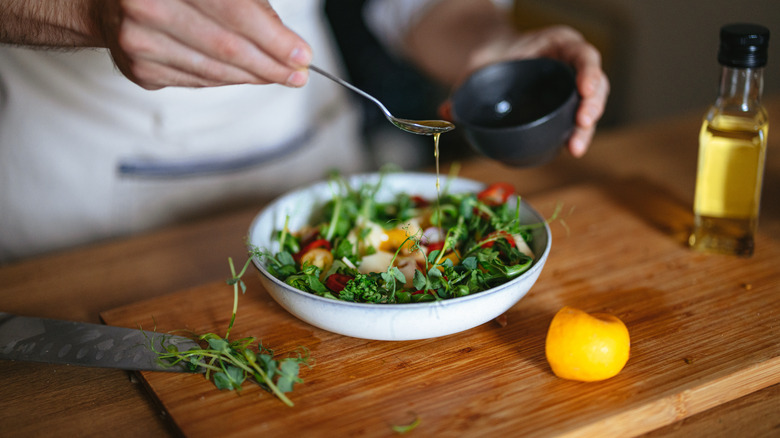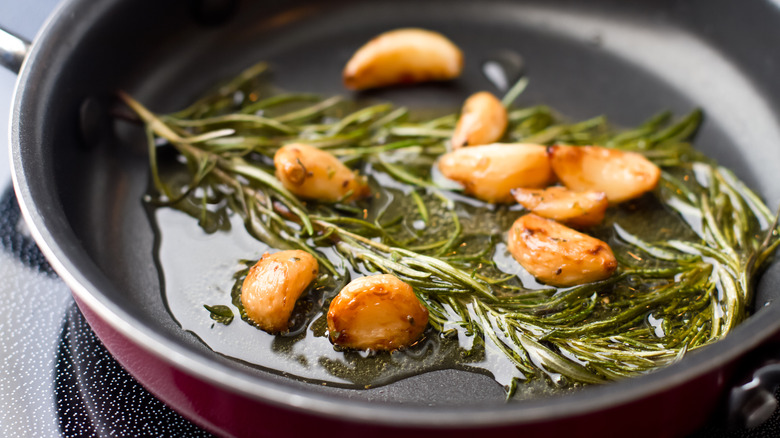Stretch That Expensive Olive Oil By Blending It With Canola
Olive oil is indispensable in the kitchen; it can be used for cooking and as a finishing touch to savory and sweet dishes. But it can become even handier when the good stuff is partnered with canola oil. For starters, it's a trick to save money. Even though the price of pricier extra-virgin olive oil varies (you can find bottles for under $10 and over $10,000), the erratic meteorological changes in Southern Europe in 2022 and 2023 — which are ongoing due to climate change — caused droughts that have affected olive harvests and increased the prices of olive oil. Considering how often you're likely to use it, a bottle can go quickly, too. It's certainly not the most affordable product in the pantry. Canola oil, meanwhile, is about five times less expensive on average.
Another reason it pays to blend your oils is that the olives used in making olive oil can influence the final taste and aroma of the product and sometimes be aggressively peppery or fruity. It can impact your recipes and sometimes overpower the other flavors in the dish, giving all your meals a similar undercurrent specific to the oil you're using. That isn't ideal, and it's why adding canola oil, which tastes neutral, brings a subtler taste of olive oil to your meals without dominating the other flavors. It's the best of both worlds and easy to do.
How much olive oil and canola oil should you mix?
You can add your mix of oils to an old bottle of olive oil or even a squeeze bottle — just remember to store it in a dry place far from any heating sources. For this hack to work, you should choose a type of olive oil with a strong taste; if you blend a mild olive oil with canola oil, it might not be possible to taste the olive oil in the finished product.
The quantities of how much of each oil you'll end up using depends on your taste and how flavorful (or not) you want the blended oil to be. You can start by adding 1 cup of olive oil to 2 to 3 cups of canola oil. You can always add more olive oil if that isn't strong enough. If it's too strong and the flavor of the olive oil is still overpowering when added to your dishes, just add more canola oil. The goal is to still be able to taste the flavor of good olive oil in your meals, as well as any other types of seasoning and ingredients you might add to your food.
Tips for blending oils
Even though opened canola oil can be stored from six to 12 months, olive oil has a shorter shelf-life and should be consumed within two months maximum. This means that when you blend the two oils, you should always consider the expiration date of the olive oil. Therefore, your blended oil mix should be good for around two months.
Canola oil and olive oil also have different smoke points, which is when you're able to tell that the oil is burning. Canola oil has a high heat smoke point, between 400 and 475 degrees Fahrenheit, and extra-virgin olive oil has a medium heat smoke point, from 325 to 400 degrees Fahrenheit. This is important because if the oil burns while on top of a dish, it can leave a burnt taste or burn the meal altogether. The smoke point for the blended oil depends on how much you use from each oil. If you use more canola oil, consider that smoke point and vice versa for olive oil.
If you consider both of those things, you should be able to enjoy your blended oil mix safely and use it to make a classic French vinaigrette or a sun-dried tomato oil.


